I am writing a ray tracer. So far I have diffuse, Blinn lighting and reflections. Something has gone wrong with my refractions and I have no idea what. I'm hoping someone can help me out.

I have a big red diffuse + Blinn sphere and a small refractive one with refraction index n = 1.5.
The small one is just really screwed up.
Relevant code:
ReflectiveSurface::ReflectiveSurface(const Color& _n, const Color& _k) :
F0(Color(((_n - 1)*(_n - 1) + _k * _k) / ((_n + 1)*(_n + 1) + _k * _k))) {}
Color ReflectiveSurface::F(const Point& N, const Point& V) const {
float cosa = fabs(N * V);
return F0 + (F0 * (-1) + 1) * pow(1 - cosa, 5);
}
Color ReflectiveSurface::getColor(const Incidence& incidence, const Scene& scene, int traceDepth) const {
Point reflectedDir = reflect(incidence.normal, incidence.direction);
Ray ray = Ray(incidence.point + reflectedDir * epsilon, reflectedDir);
return F(incidence.normal, incidence.direction) * scene.rayTrace(ray, traceDepth + 1);
}
Point ReflectiveSurface::reflect(const Point& N, const Point& V) const {
return V - N * (2 * (N * V));
}
bool RefractiveSurface::refractionDir(Point& T, Point& N, const Point& V) const {
float cosa = -(N * V), cn = n;
if (cosa < 0) { cosa = -cosa; N = N * (-1); cn = 1 / n; }
float disc = 1 - (1 - cosa * cosa) / cn / cn;
if (disc < 0) return false;
T = V / cn + N * (cosa / cn - sqrt(disc));
return true;
}
RefractiveSurface::RefractiveSurface(float _n, const Color& _k) : ReflectiveSurface(Color(1, 1, 1) * _n, _k) {}
Surface* RefractiveSurface::copy() { return new RefractiveSurface(*this); }
Color RefractiveSurface::getColor(const Incidence& incidence, const Scene& scene, int traceDepth) const {
Incidence I = Incidence(incidence);
Color reflectedColor, refractedColor;
Point direction = reflect(I.normal, I.direction);
Ray reflectedRay = Ray(I.point + direction * epsilon, direction);
if (refractionDir(direction, I.normal, I.direction)) {
Ray refractedRay = Ray(I.point + direction * epsilon, direction);
Color colorF = F(I.normal, I.direction);
reflectedColor = colorF * scene.rayTrace(reflectedRay, traceDepth + 1);
refractedColor = (Color(1, 1, 1) - colorF) * scene.rayTrace(refractedRay, traceDepth + 1);
}
else {
reflectedColor = scene.rayTrace(reflectedRay, traceDepth + 1);
}
return reflectedColor + refractedColor;
}
The code is all over the place, since this is a homework and I'm not allowed to include additional headers and I have to send it in in one cpp file, so i had to separate every class into forward declaration, declaration and implementation in that one file. It makes me vomit but I tried to keep it as clean as possible. There is tons of code so I only included what I thought was most related. ReflectiveSurface is RefractiveSurface's parent class. N is the surface normal, V is the ray direction vector this normal, n is the refraction index. The incidence structure holds a point, a normal and a direction vector.
Formulas for the Fersnel approximation and the refraction vector respectively:

You can see in the code that I use an epsilon * ray direction value to avoid shadow acne caused by float imprecision. Something similar seems to be happening to the small sphere, though.
Another screenshot:


As you can see, the sphere doesn't appear transparent, but it does inherit the diffuse sphere's color. It also usually has some white pixels.
Without refraction:

